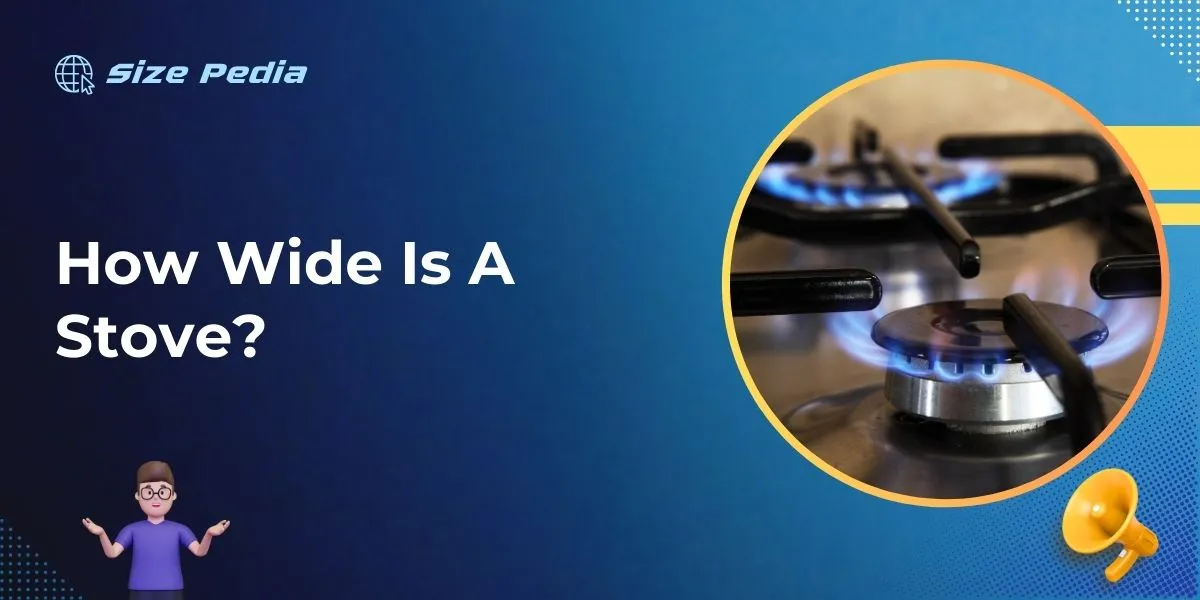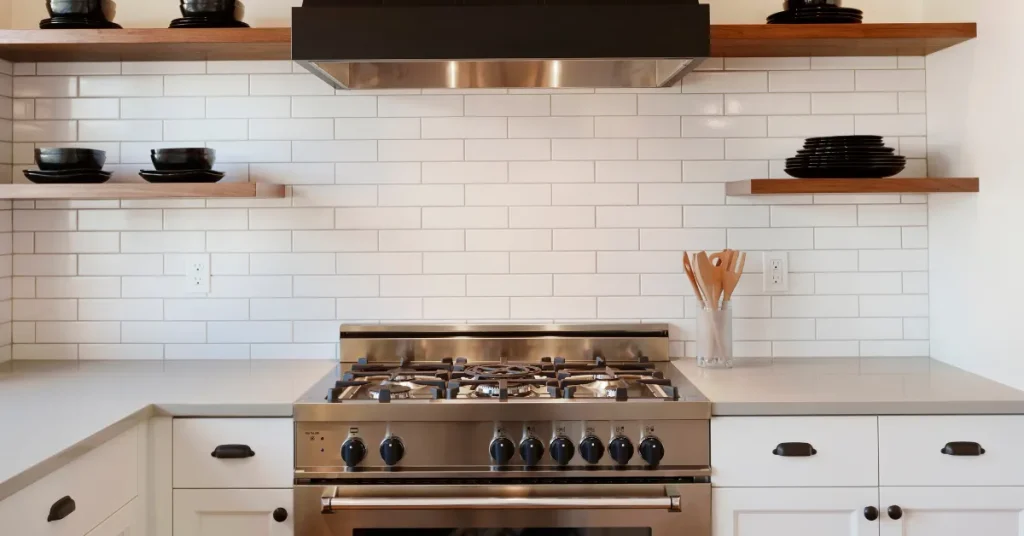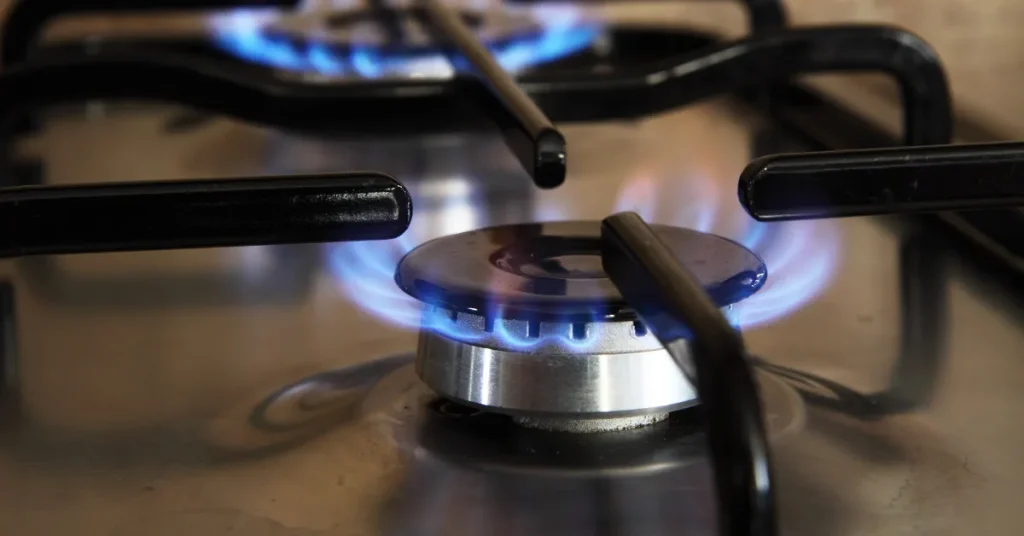The standard width of a residential stove is 30 inches. Some models may vary, measuring 20 to 40 inches wide.
Choosing the right stove size is crucial for any kitchen’s design and functionality. Stoves, or ranges, serve as the heart of the kitchen, providing a central point where meals are prepared and cooked.
With sizes ranging from compact 20-inch widths for small spaces to larger 40-inch versions for gourmet kitchens, there is a stove to fit every home’s needs.
This variety allows for flexibility in kitchen layout planning, whether you’re outfitting a cozy apartment or a spacious home. The popular 30-inch stove is typically a perfect balance, fitting well in most kitchen configurations while providing ample cooking surface.
Homeowners and builders should consider existing kitchen space, cabinetry, and cooking needs to select the ideal stove width for their specific situation.

Common Stove Sizes
Finding the perfect fit for your kitchen starts with understanding stove dimensions. Stoves come in various sizes. It’s crucial to know these sizes. This ensures your stove fits your space and needs.
Range Dimensions
Range dimensions vary. Most kitchens accommodate the standard 30-inch width. Yet, commercial styles often extend to 36 inches or more. Typical stove measurements are:
| Width | Depth | Height |
| 20 to 40 inches | 24 to 28 inches | 36 inches (standard) |
Standard sizes fit most homes. Professional ranges are wider and taller.
Compact Vs. Full-sized Models
Your kitchen’s size may need a compact or full-sized model. Here’s how they differ:
- Compact ranges are typically 20 to 24 inches wide.
- They suit smaller spaces and efficient cooking.
- Full-sized models often start at 30 inches wide.
- They offer more burners and oven space.
Select the size that matches your cooking habits and kitchen layout.
Measuring For Your Space
Ready to fit a new stove into your kitchen? Measuring for Your Space is crucial.
It ensures the stove fits just right. Before buying,
grab a tape measure. Get the width, height, and depth of your space. Let’s learn how.
Tools Required
- Tape measure: Get accurate space dimensions.
- Notebook: Note down the measurements.
- Pencil: Better than a pen, in case you need to erase.
- Level: Ensure your surface is even.
Step-by-step Guide
- Empty the area: Clear out any items where your stove will go.
- Measure the width: Run tape measure from left to right. Note the number.
- Height time: Measure from the floor to above the back of the stove area.
- Don’t forget depth: Front to back measurement is next. Write it down.
- Double-check: Measure twice to be sure. Accuracy matters.
- Space for movement: Leave wiggle room around the stove. Air needs to flow.
- Use the level: Check if your floor is flat. Adjust if needed.
Types Of Stoves And Their Widths

When remodeling a kitchen or buying a new stove, size matters. Different types of stoves come in a variety of widths to match kitchen layouts and cooking needs.
Knowing the standard widths ensures the perfect fit for any kitchen space. Let’s explore the common widths for various stove types.
Freestanding Units
Freestanding stoves offer versatility and easy installation. These units stand alone with finished sides, allowing for placement anywhere in the kitchen. Standard widths include:
- 24 inches – Ideal for small spaces or apartments.
- 30 inches – The most common size, it fits in most kitchens.
- 36 inches – Offers more cooking surface, perfect for larger families.
Slide-in And Drop-in Ranges
These ranges provide a custom, built-in look. They are designed to fit between cabinetry with controls on the front. The main widths are:
| Slide-In Widths | Drop-In Widths |
| 30 inches36 inches | 30 inches |
Note that custom sizes might be available for unique kitchen designs.
Professional-grade Options
Professional-grade stoves are built for serious cooks. They have more features and heavier construction. Widths range widely to accommodate different cooking styles:
- 30 inches – Standard size for home chefs.
- 36 inches – Extra space for multitasking.
- 48 inches – Full-scale options with dual ovens.
- 60 inches – Top-of-the-line size, usually found in commercial kitchens.
Professional units might also come in custom sizes to fit specific requirements.
Installation Considerations
Fitting a new stove involves more than just purchasing the right size. Proper installation is crucial for efficiency and safety.
The width of the stove must match the available space. Also, it must adhere to safety regulations. This section covers the important details you need to consider during the installation.
Clearances And Safety
Keeping a safe distance between the stove and other surfaces is key. This prevents fires and maintains a safe kitchen. It is not only about the stove width but also the surrounding area. Check the manufacturer’s guidelines for the required clearances.
- Sides: Usually a minimum of a few inches
- Rear: A safe distance from the wall is necessary
- Top: Clearance from the range hood or microwave above
Professional installers assess these clearances in advance. They ensure everything meets local fire codes.
Cabinetry Adjustments
To fit a new stove, you might need to modify your cabinetry. This is especially true if the stove is wider than the old one. Precise measurements are vital to this process.
| Adjustment | Details |
| Cutting | Remove sections for more space |
| Shimming | Fill gaps if the stove is narrower |
| Support | Strengthen cabinetry for heavier models |
Skilled carpenters or installers can make these cabinet adjustments. They ensure your stove fits snugly and operates safely.
Choosing The Right Size For Your Kitchen

Choosing the right size for your kitchen is important when buying a new stove.
A stove that fits your space makes cooking easier.
Kitchen Layout Impact
Before picking a stove, look at your kitchen’s layout.
- Measure the area where the stove will go.
- Think about cabinets and counters near the stove.
- Check for enough clearance on all sides.
Ergonomics And Usage
Consider how you use your kitchen.
The stove’s height and control accessibility matter.
A model that reduces bending and reaching is best. This might be a table-top or slide-in design.
| Stove Type | Width Range (inches) |
| Compact | 20 to 24 |
| Standard | 30 |
| Commercial | 36 and up |
Choose a size that fits your cooking habits and kitchen size.
Customization And Non-standard Sizes
Customization and Non-Standard Sizes cater to unique kitchen spaces and personal cooking needs.
Not all kitchens are the same, leading to a demand for stoves that break the mold of standard widths. Whether it’s a cozy apartment or an expansive gourmet kitchen, non-standard sizes mean that no space is too challenging.
Tailored Design Solutions
Tailored Design Solutions offer endless possibilities for those with specific kitchen dimensions.
- Extra-wide models for spacious areas.
- Narrow widths to fit in tight spots.
- Unique configurations, such as corner stoves.
- It’s not just about width; height and depth can also be customized.
A kitchen that reflects personal style and meets cooking habits is possible with these custom stoves.
Where To Find Custom Stoves
Finding the perfect custom stove is now easier than ever.
- Specialty kitchen boutiques offer personalized services.
- Online retailers showcase a variety of custom options.
- Local appliance craftsmen can create a bespoke stove.
Research and compare to find a stove that fits your style and space. Focus on reputable brands known for quality and customization.
FAQs About How Wide Is A Stove
Are All Stoves 30 Inches Wide?
Not all stoves are 30 inches wide. Stove widths can vary, with models available in different sizes to fit various kitchen layouts and personal preferences.
How Wide Is A Standard Stove?
A standard stove typically measures about 30 inches in width.
What Is The Width Of An Oven?
Oven widths typically range from 24 to 36 inches. Standard models are often 30 inches wide, fitting most kitchen layouts.
Is A 30-inch Range Too Small?
A 30-inch range is not too small; it suits most home kitchens, offering adequate cooking space for daily meals. Ideal for smaller spaces, it accommodates average-sized cookware comfortably.
Conclusion
Understanding stove dimensions is crucial for kitchen design and appliance selection. Most stoves range from 20 to 36 inches wide, suiting various spaces and cooking needs.
Remember, check your kitchen space and ensure compatibility before making a purchase. Choosing the right stove width enhances your culinary experience and kitchen functionality.
Resources:
1. https://www.energy.gov/energysaver/gas-and-electric-ovens-stoves-and-ranges
